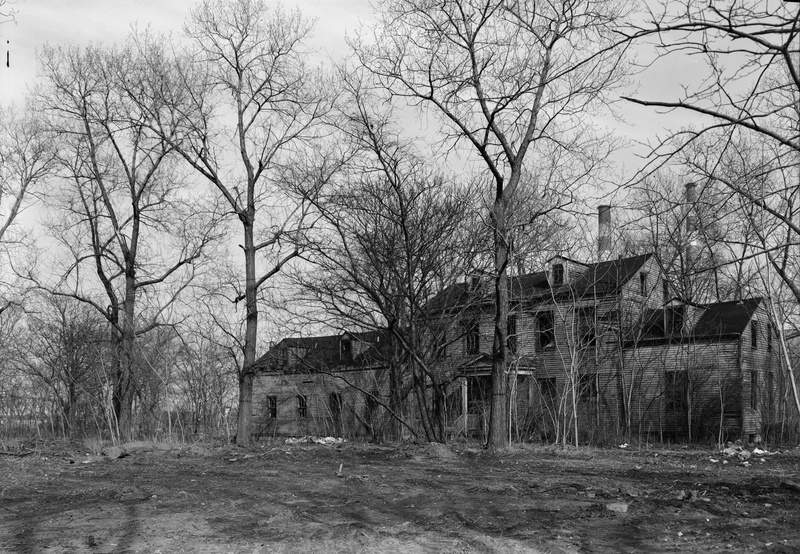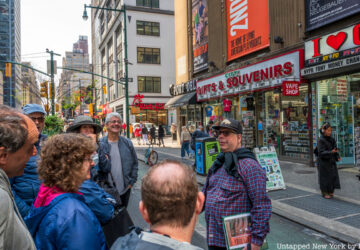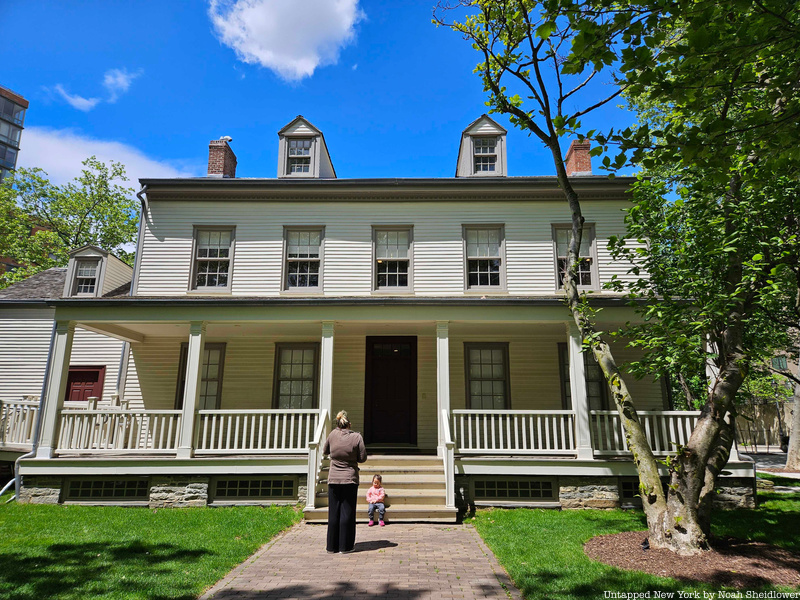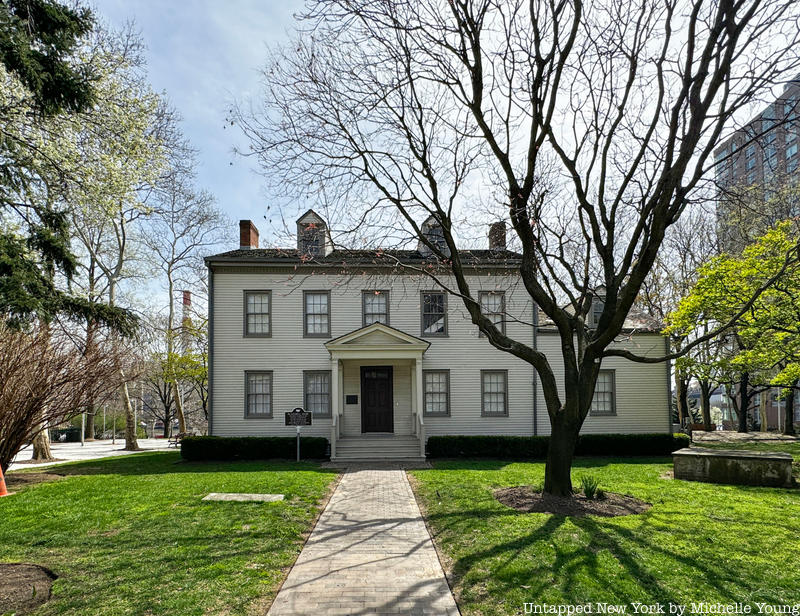The evolution of Roosevelt Island itself is illustrated in the history of the Blackwell House, a historic home built between 1796 and 1804. Over the centuries, the home has served as a private residence, housing for penitentiary workers, and more. For decades, it was left abandoned. Here, we look at before-and-after photos as we retrace the history of this New York City landmark. Join us for a visit to see the stunning restoration for yourself and go inside!

Our tour of Roosevelt Island on May 11th with special access inside the Blackwell House will be led by Roosevelt Island Historical Society (RIHS) Director Judith Berdy and Untapped New York’s Chief Experience Officer Justin Rivers. In addition to the Blackwell House, you’ll also uncover a hidden Guastavino tile ceiling inside a former trolley booth, see a laboratory where groundbreaking discoveries were made, check out a newly planted tiny forest, and more! This tour is offered at a discounted rate of $12 for Untapped New York Insiders. 100% of your ticket price goes to RIHS. Not an Insider yet? Become a member today with promo code JOINUS and get your first month free!
The Blackwell House is the only extant structure on Roosevelt Island that dates to its days of private ownership. Before the city bought the island in the 1820s, it belonged to Robert Blackwell. Blackwell’s wife, Mary Manningham Blackwell, inherited the island from its previous owner, her stepfather, Captain John Manning, in 1686.
The Blackwells farmed and quarried the island for multiple generations. After the Revolution, descendant James Blackwell constructed the house we see today. It is a simple two-story clapboard farmhouse with a single-story kitchen wing and a lovely back porch.

Once the island was sold to the city, it became known as “Welfare Island” for the institutions built there. A penitentiary, asylum, almshouse, and various charity hospitals quickly went up. The Blackwell home became a residence for administrative workers at the newly built penitentiary and later, for the warden of the island’s Almshouse. By the early 1900s however, the home was abandoned.
The historic structure soon fell into disrepair. Photos here show the home in its dilapidated state as captured by the Historic American Buildings Survey in 1970. You can see major holes in the walls, ceilings, and floors, peeling paint, toppled furniture, broken windows, and unruly and overgrown grounds.

As the house was on the verge of collapse, The New York State Urban Development Corporation was working on a redevelopment program for the island (re-named after President Franklin Roosevelt in 1973). Despite its poor condition, historians and architectural historians who surveyed the house deemed it worthy of preservation. Architect Giorgio Cavaglieri was commissioned to design the first major restoration, which was completed in 1973. A few years later, in 1976, the home was designated as a New York City Landmark.

For nearly thirty years no other major improvements were made to the house and no permanent use for it was found. By the 2000s, it was starting to decay again. A New York Times article from 2001 reported vandalism and a need for repairs. They finally came nearly twenty years later. In 2022, a $2.9 million renovation project was completed. Workd done included “the installation of new partitions, stairs, ceilings, doors, trimming, heating and ventilation system, as well as electrical, plumbing and fixtures.” There were also upgrades to the ADA-compliant access ramp. These renovations allowed for the first floor of the home to open to the public.

Today, the Blackwell House serves as a community center. The Roosevelt Island Historical Society uses the home occasionally for special events. The first floor contains images of other historic Roosevelt Island structures like the Smallpox Hospital, asylum, and the Strecker Laboratory—the first lab in the country devoted exclusively to pathological and bacteriological research (which we’ll stop at on our tour!).

Join us to learn more about the Blackwell House history and restoration while exploring the grounds and first floor on May 11th!








